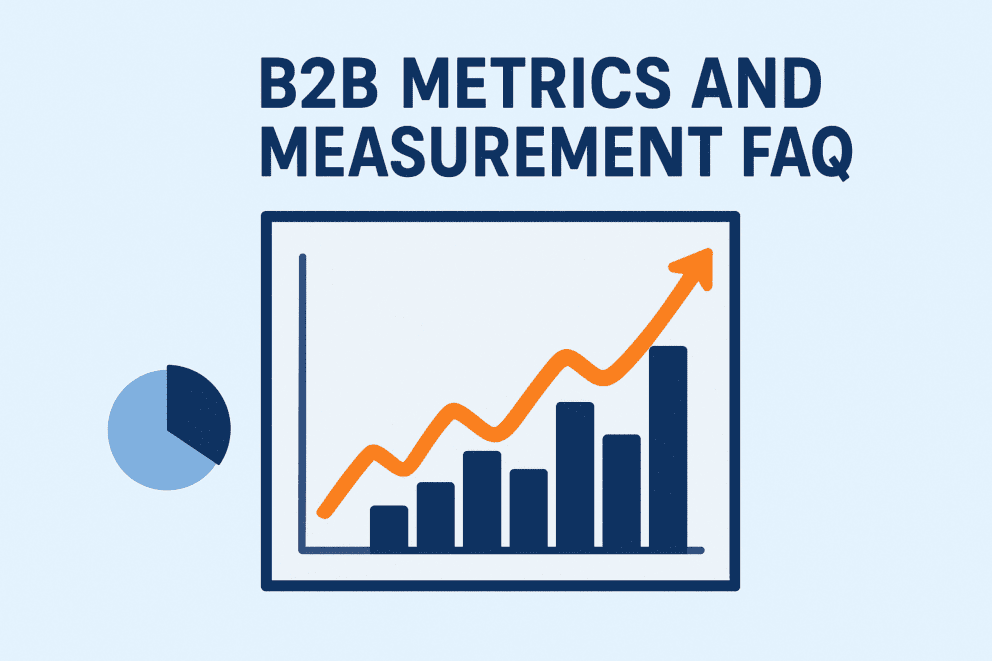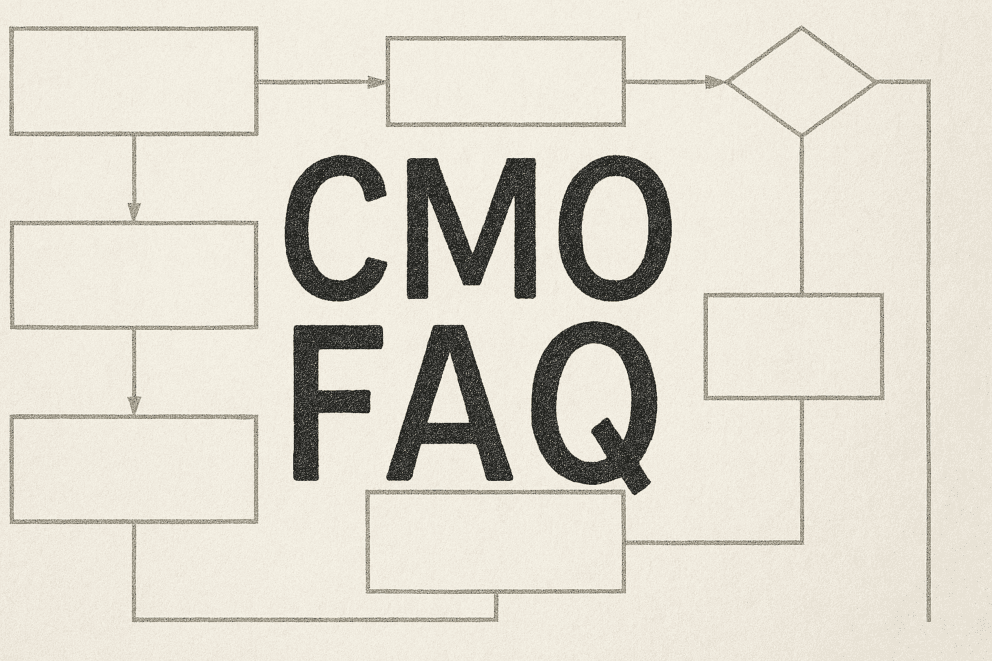Data-Driven Forecasting and Budget Justification – A CMO’s Guide to Speaking the CFO’s Language (Part 2)

Summary
If you’re a CMO looking to secure budget, earn CFO trust, and prove marketing’s contribution to revenue, this post is for you. You’ll learn how successful marketing leaders go beyond top-of-funnel metrics to forecast pipeline with accuracy, using tools and benchmarks CFOs actually care about. From CAC to pipeline coverage to forecast variance, we show you how to package performance in financial terms that align with how CFOs evaluate investment decisions. Please consider this a your playbook for building a credible, data-driven partnership with finance.
Maria GeokezasOpens a new window Chief Operating Officer at Heinz Marketing
CMOs who consistently earn the trust and support of their CFOs know that predictability is everything. Through our work with high-performing marketing leaders, we’ve seen a common thread: they don’t just report on marketing performance—they forecast it with accuracy and speak to it in terms their CFOs care about. In our last post, we explored how sales velocity can serve as a starting point for forecasting marketing’s revenue impact. But to build true credibility and secure long-term investment, CMOs must go further. This article builds on that foundation, highlighting how successful marketing leaders leverage conversion data, benchmarks, and financial packaging to create a trusted, mutually beneficial partnership with finance.
Why Forecasting Matters to CFOS
CFOs are responsible for managing risk and ensuring steady financial performance that meet their investors expectations. When forecasts miss, CFOs must act. In many times this means tightening of budgets.
True story: fewer than 25% of sales teams achieve 75% forecast accuracy or higher. Even worse, less than half of sales leaders trust their own projections. If sales—whose forecasts are revenue-based—are that uncertain, marketing projections often draw even more skepticism. And when projections feel like guesswork, CFOs play it cautiously by cutting budgets.
That’s why accuracy—not optimism—is essential. When your forecasting is consistently close to actuals, marketing earns a seat at the table. With predictive data and diligent calibration, CMOs prove to be their business partners, not budget line items.
Beyond Sales Velocity: Elevating Your Forecasting Game
Sales velocity is a great place to start—it’s simple, intuitive, and directly tied to revenue. But earning lasting confidence from your CFO requires a more complete view. The most successful CMOs layer in additional forecasting tools and conversion data to build models that are not only accurate, but defensible. Here’s how to take your forecasting game to the next level.
-
Funnel Conversion Modeling
Track your end-to-end funnel metrics and calculate:
| Metric | Example Rate |
| MQL → SQL | ~30% |
| SQL → Opportunity | 60% |
| Opportunity → Closed-Won | 20–30% |
Start with your top-line goal (e.g., $X revenue), convert with known rates, and reverse-engineer needed funnel volume. This bottoms-up approach gives your CFO a transparent, data-rooted forecast. Here’s a spreadsheet to get you started.
-
Predictive Analytics & Historical Lift
Tools like MadKudu, Clari, and 6sense surface buying signals and model how prospects behave. AI/ML models have shown the ability to boost forecast accuracy by up to 20–30% .
Historical lift analytics also help forecast: If a $100K account-based effort generated 20% more pipeline historically, show how similar investments should produce predictable returns again.
-
Forecasting Cadence & Rigor
Forecast accuracy improves when reviewed actively. Korn Ferry found formalized forecast reviews bump forecasted win rates by 17% . Establish regular review cycles (weekly/biweekly) to tighten assumptions and keep adjustments plugged in.
Benchmarks CFOs Actually Care About
Benchmarks can be a valuable reference point—they give CFOs familiar ratios and comparisons to evaluate marketing performance. But they’re just that: reference points, not rules. Relying too heavily on benchmarks without the context of your specific business model, sales cycle, or go-to-market maturity can lead to flawed conclusions. Use them to inform your strategy, not define your success. Here are a few metrics CFOs tend to trust and how to use them wisely.
- MQL → SQL Conversion
- Opportunity → Win Rate
- Pipeline Coverage Ratio
- Customer Acquisition Cost
- LTV Ratio
- Forecast Accuracy
These benchmarks help finance evaluate whether marketing plays are efficient, scalable, and financially sound.
Package Marketing in CFO Language
Even the most impressive marketing results can fall flat if they’re not communicated in a way the CFO understands and values. To build credibility and secure future investment, CMOs need to translate marketing impact into the financial terms that matter—think efficiency, ROI, and forecast accuracy. Here’s how to frame your results so they resonate in the boardroom.
| From… | To… |
| “1,200 leads, 4.6% CTR” | “40 closed-won opportunities at $60K avg = $2.4M pipeline on $200K spend (12× pipeline ROI)” |
| “Webinar had 300 sign-ups” | “DJ Account webinar generated 10 SQLs, projecting $600K revenue—ROI 6:1” |
Additionally, track forecast accuracy:
“We predicted $1M in pipeline last quarter; actuals hit $1.05M (+5% vs forecast).”
“For this quarter, we’re forecasting $750K pipeline, based on funnel metrics and historical lift from similar campaigns.”
Bring the CFO into the Process
CFOs are far more likely to support marketing investments when they’ve had a hand in shaping the assumptions behind them. Involving finance early in your planning and forecasting process creates shared ownership of the numbers—and greater confidence in the outcomes. It’s not just about alignment; it’s about building a foundation for smarter, faster decisions across the business.
- Invite finance to model reviews—ask for their input.
- Share dashboards that show marketing spend vs. forecasted pipeline and outcomes.
- Create a rolling forecast model—updated monthly—to reflect real-time changes.
- Cite data-backed benchmarks and models so finance sees the rigor in assumptions
A Deloitte study found 79% of high-growth companies have CFOs and CMOs aligned on performance metrics—compared to just 55% in slower-growing firms. Proving alignment = growth.
Why this Matters
This isn’t just about delivering numbers—it’s about elevating the role of marketing as a revenue-responsible function with a true seat at the table. When CMOs use accurate forecasting, meaningful benchmarks, and financial language, they gain more than just CFO approval—they gain strategic influence. A strong partnership with finance helps marketing lead, not follow—shaping priorities, guiding investment, and having a real say in how the business grows. For marketers, it’s not just about protecting budget—it’s about owning outcomes and having greater control over your team’s (and your own) trajectory inside the organization.
If you’d like to talk to one of our consultants about how to get started creating a revenue-responsible marketing function for your organization, please feel free to reach out to us.





